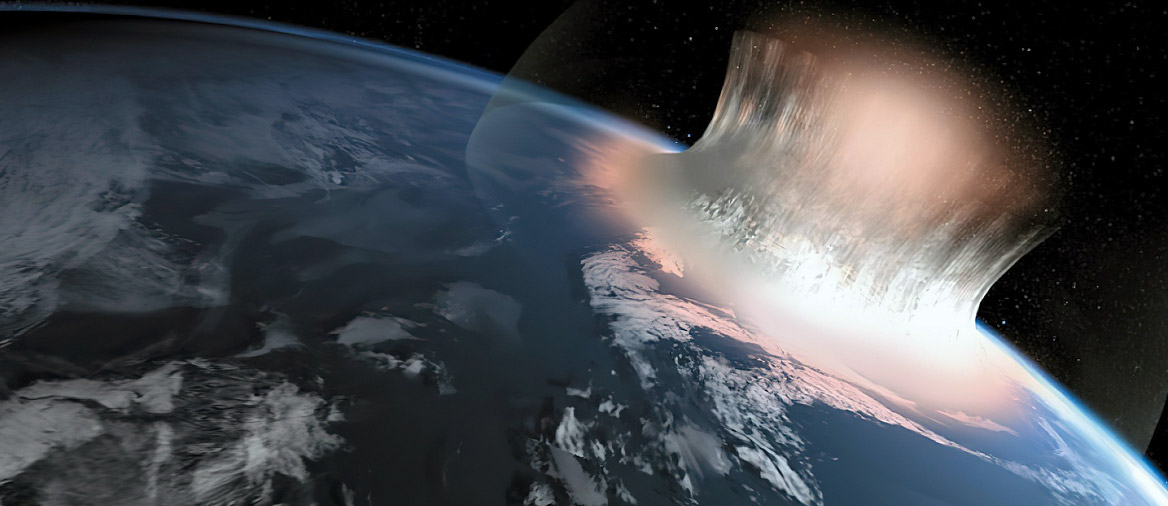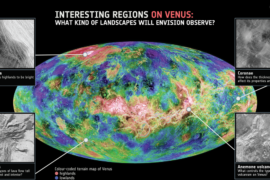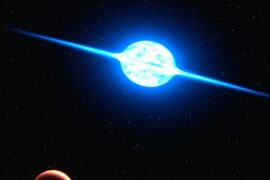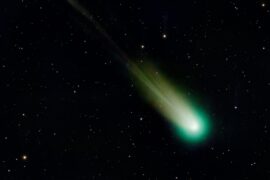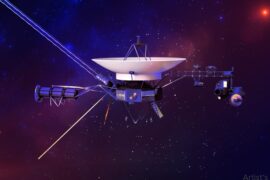Asteroids are a very unique type of object in the Solar system. Starting from their definition.
An asteroid is a type of minor planet that orbits around a star. But calling them a minor planet makes them sound much larger than they are. Asteroids are as small as 1 meter long in diameter (3.2 ft) and can be as large 1,000 kilometers (621 miles). Anything larger than that is generally considered a dwarf planet, and anything smaller is a meteoroid.
There are approximately one million known asteroids in the Solar system. Most of them are located in groups or belts near each other. The most populated ones are the asteroid belt located between the orbits of Mars and Jupiter, and the Kuiper belt, a group that extends from Neptune to 50 Astronomical Units (7.4 x 109 km) away from the Sun near the edges of the Solar system.
But out of these hundreds of thousands of asteroids, a few stand out. Some because of their size, others because of their composition, others because their trajectory brings them close to Earth, fortunately, only a few because they have collided with our planet in the past.
In this article, we’ll take a look at the most famous asteroids and the reasons why they are important.
8. 16 Psyche
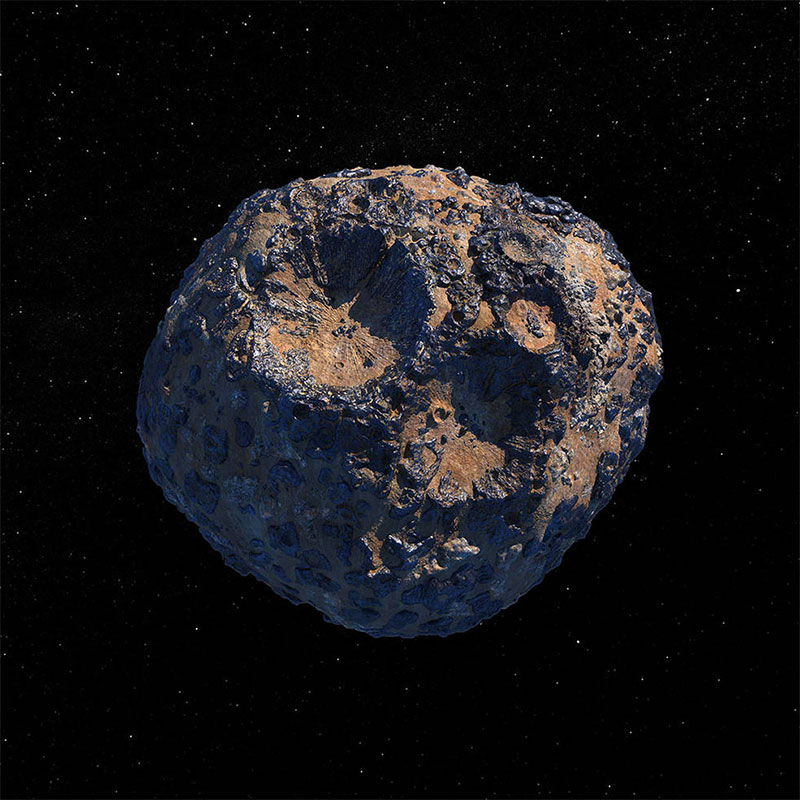
16 Psyche is named after the Greek goddess of soul. The 16 in its name refers to the fact that it was the sixteenth asteroid discovered.
This is going to be a very important asteroid for the future of mankind. In 2017, NASA announced a mission that will study this asteroid from its orbit. The mission had some delays, but it is expected that it will arrive at 16 Psyche in 2030. But why is this object in particular important enough to send a probe to study it?
Well, it turns out it is an M-type asteroid. The M is for Metallic. And that is interesting because it is possible that 16 Psyche is the “corpse” of the core of a planet that didn’t fully develop, probably due to collisions with other objects. If that is the case, studying it will tell us a lot about the core of our own planet and will help us better understand the structure and composition of metallic bodies in the universe.
There might also commercial value to the Psyche mission. The amount of gold, platinum, and other valuable metals in the asteroid have a value of $500 quintillion dollars down here on Earth. And while the Psyche mission’s objective has nothing to do with extracting any of it, understanding these asteroids will bring us a step closer to making space mining a reality in the future.
We have a whole article about 16 Psyche and the Psyche mission if you want more information about it.
7. Dimorphos
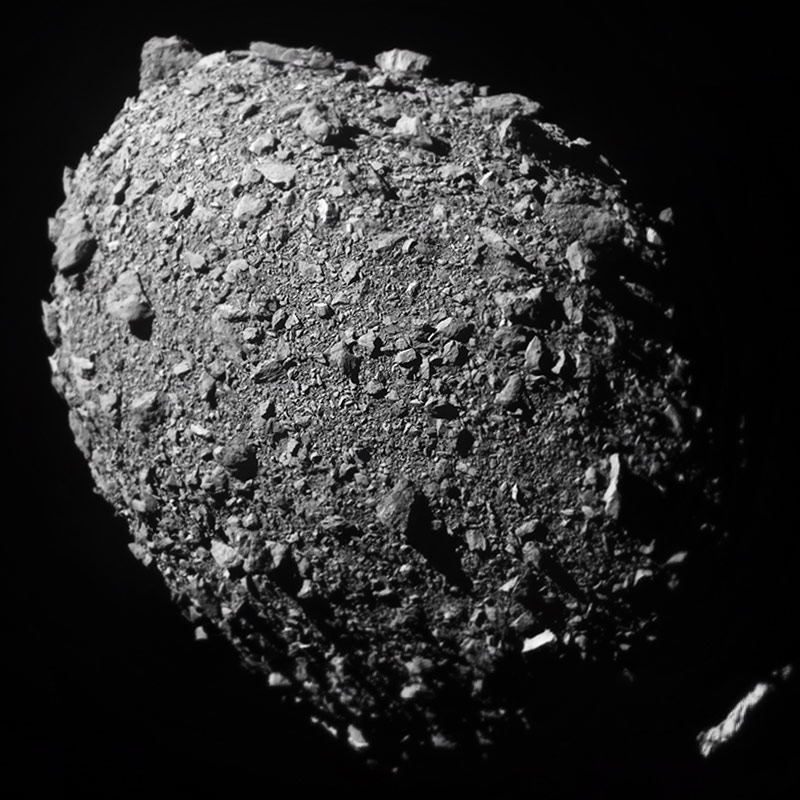
Dimorphos is part of a binary system of asteroids. It orbits around a slightly larger asteroid named Didymos and has a near-Earth orbit.
There’s nothing too special about Dimorphos, except that it is relatively close to Earth, and yet, it has become one of the most famous asteroids. This is because it was a perfect candidate for the DART mission that NASA launched in 2022. The objective of this mission was to serve as the first test of planetary defense against asteroid impacts.
The DART spacecraft was intentionally crashed into Dimorphos on September 26th, 2022. The objective is to study if this type of impact can affect the momentum and direction of an asteroid enough for this method to be a viable form of defense in case we ever need it.
Dimorphos wasn’t in a path that would represent any danger to Earth. It was just chosen because it was close enough for it to be properly studied.
The results of the DART program are still unknown as it will take a few years of studying Dimorphos to assess the success of the mission.
6. Bennu
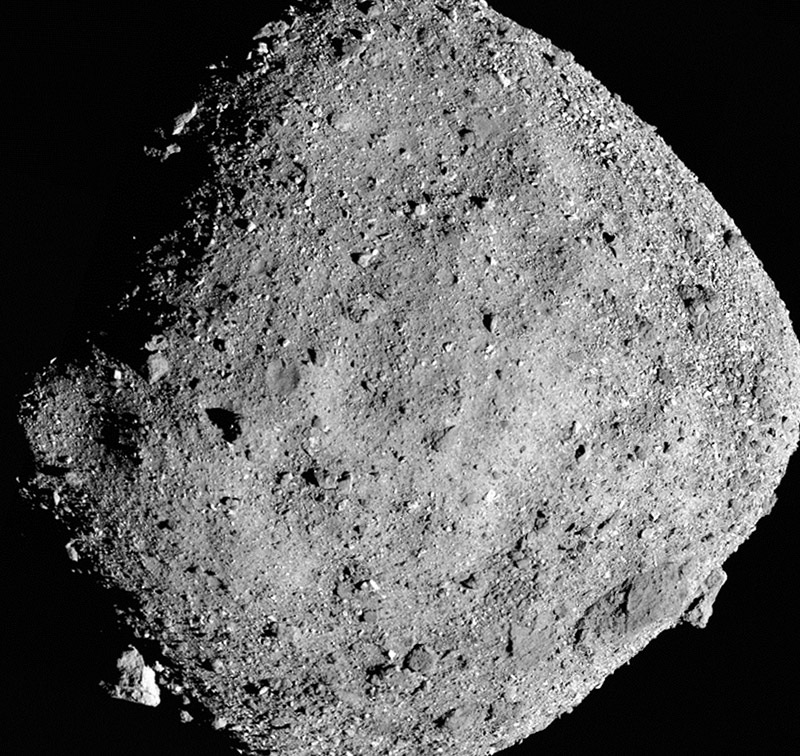
Bennu, or more accurately, 101955 Bennu is one of the most important asteroids out there because of two separate reasons.
First, it has the highest rating on the Palermo Technical Impact Hazard Scale. This means, that out of all the near-Earth asteroids that we know of, it has the highest risk of colliding with our planet in the next 300 years or so. But don’t panic yet. Even though it has the highest probability, the odds are only 1 in 1,800 or about 0.005%.
Still, that was enough reason for NASA to choose it as the target of the OSIRIS-REx mission which is the second reason why Bennu is important.
This mission was the first to land a spacecraft on an asteroid. It landed on Bennu on December 3, 2018, and its objective was to retrieve a sample of Bennu’s surface to study. NASA believes OSIRIS-REx retrieved between 400 grams and 1 kg of material, well above the 60 grams they had as the original goal.
OSIRIS-REx will return back to Earth in 2023 with the sample.
5. Ryugu
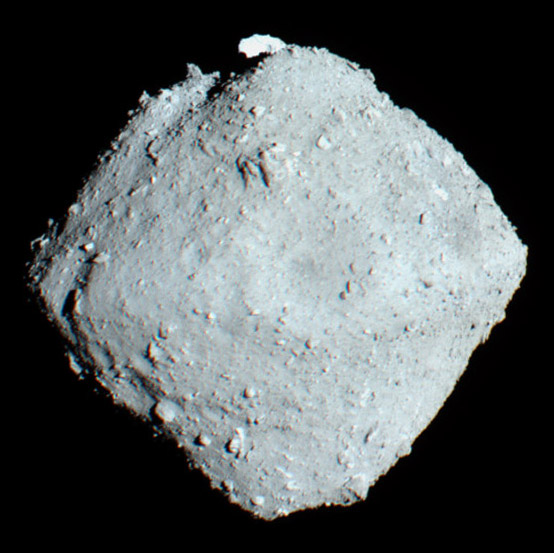
Similarly to Bennu, the asteroid 162173 Ryugu is near the top of the list of potentially hazardous objects that could represent a danger to Earth. But what makes Ryugu notable is its large size.
Ryugu has a diameter of 900 meters (3,000 ft) and is estimated to weigh almost 500 million tons.
This is why the Japanese Space Agency (JAXA) sent a probe to collect a sample of it in 2018. The Hayabusa2 successfully acquired the sample by shooting tantalum projectiles at it and catching the debris.
The Hayabusa2 dropped the sample on Earth in 2020. Scientists will continue to study it for years to come.
4. Apophis
You might have heard of this one. Apophis is a common name drop in the conspiracy theory and catastrophe circles. This is because, in 2004, some observations estimated a 2.7% chance that Apophis would hit Earth in the year 2036. According to these observations, the asteroid could be captured by Earth’s gravity during its pass near Earth in 2029 which would result in a collision 7 years later.
Well, I have good news for you. Apophis is not going to collide with Earth. At least not in the near future.
After that news came out, astronomers started to take a closer look at Apophis and ran the numbers again and again. In January 2013, the possibility of a collision between Earth and 99942 Apophis in 2036 was completely ruled out. In fact, its trajectory has been studied in so much detail that the margin of error has been reduced from hundreds of kilometers in that original 2004 data to just a couple of kilometers today. The probability of an impact with Apophis in the next 100 years is zero. In fact, Apophis has even been taken out from the Sentry Risk Table, the Torino impact hazard scale, and other lists of objects that track potential threats.
Unfortunately, no one has told this to the YouTubers that keep making videos about it.
3. Ceres

Ceres is an interesting one because it sort of has a dual classification. It is an asteroid, but it is also a dwarf planet.
It was the first asteroid ever discovered. The Italian astronomer Giussepe Piazzi found it on January 1st, 1801. It was the first object in the asteroid belt to be discovered because it is much bigger than the rest. It is so big that it has hydrostatic equilibrium, which means it is large enough for its own gravity to shape it like a sphere. For this reason, Ceres was first considered a new planet.
As more objects were found in the asteroid belt, Ceres then got re-classified as an asteroid. But Ceres never fully fit in with the rest of the asteroids. It is too big with a diameter of almost 1,000 kilometers.
In 2006 when the International Astronomical Union (IAU) created the classification for dwarf planets where Pluto got demoted from being a planet, Ceres fit right in with the description, so, it got re-classified again as a dwarf planet.
So is Ceres both a dwarf planet and an asteroid? the answer is…maybe. The IAU has been a bit ambiguous about defining whether or not an object could have a dual classification. The question is kind of up in the air, but most people do consider Ceres to be both.
2. The Tunguska event

On the morning of June 30, 1908, a devastating 12-megaton explosion occurred near the Tunguska river, in Siberia, Russia. The records are scarce and the area wasn’t very populated, but it is believed the impact may have killed at least three people. If this event had happened somewhere else it would have had the power to destroy a whole city.
The explosion was caused by an asteroid.
More specifically, it was caused by a meteor air burst which is what happens when an object enters Earth’s atmosphere and disintegrates violently. Because there was no impact crater left, it is believed the meteor exploded 5-10 kilometers before hitting the surface (remember that when an object like an asteroid or a meteoroid enters the atmosphere, it is then classified as a meteor).
Some eyewitness reports say that the explosion was so bright that it illuminated the sky for a few moments in places as far as Scotland.
The asteroid hadn’t been identified or classified prior to the impact so it had no name or designation. It is just known as the Tunguska asteroid.
No large meteorites were officially found even though expeditions to search for them were funded throughout several decades. Only microscopic pieces of silicate and magnetite were found. High concentrations of nitrogen, iridium, and other elements were also found in the rocks and trees in the area. These were deposited by the impact or the acid rain that followed it.
1. Chicxulub
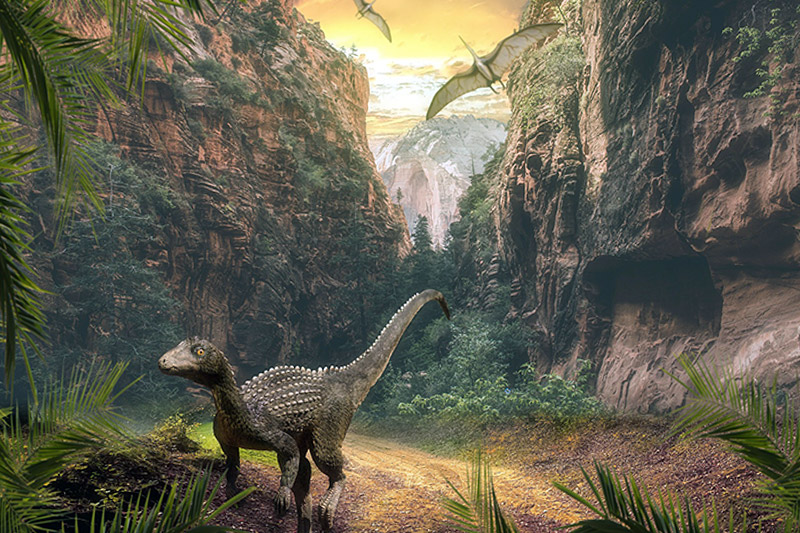
The Chicxulub crater is located in the Yucatan peninsula in Mexico. It is believed to have been caused by an asteroid impact and it is theorized it could have been the cause of the mass extinction event that took out the dinosaurs along with 75% of life on the planet.
Half the crater is buried in the ocean, but it is estimated to have a diameter of 180 kilometers (112 miles) and to be about 20 kilometers deep (12.4 miles) which means that the asteroid that caused it would have had a diameter close to 10 kilometers long (6.2 miles).
The impact happened about 66 million years ago which means that today there’s little information left for scientists to study the origins and characteristics of the asteroid. It is believed it was a C-type asteroid (carbonaceous) and some simulations suggest that it could have originated in the outer edges of the asteroid belt.
The Chicxulub asteroid is famous because it represents a warning to us as a species. It is a reminder that if humankind is to thrive, we can’t take the planet for granted and we need to develop the technology to protect ourselves from threats like asteroids and colonize other planets.
Summary
- Asteroids are larger than 1 kilometer and smaller than 1,000 kilometers.
- Multiple asteroids like Bennu, Ryugu, and Psyche are being studied by sending spacecrafts so we can better understand their characteristics.
- Some famous asteroids include Ceres, Apophis, Dimorphos, and the Chicxulub asteroid.
Enjoyed this article?
Get daily 10-minute PDFs about astronomy to read before bed!
Sign up for our upcoming micro-learning service where you will learn something new about space and beyond every day while winding down.

